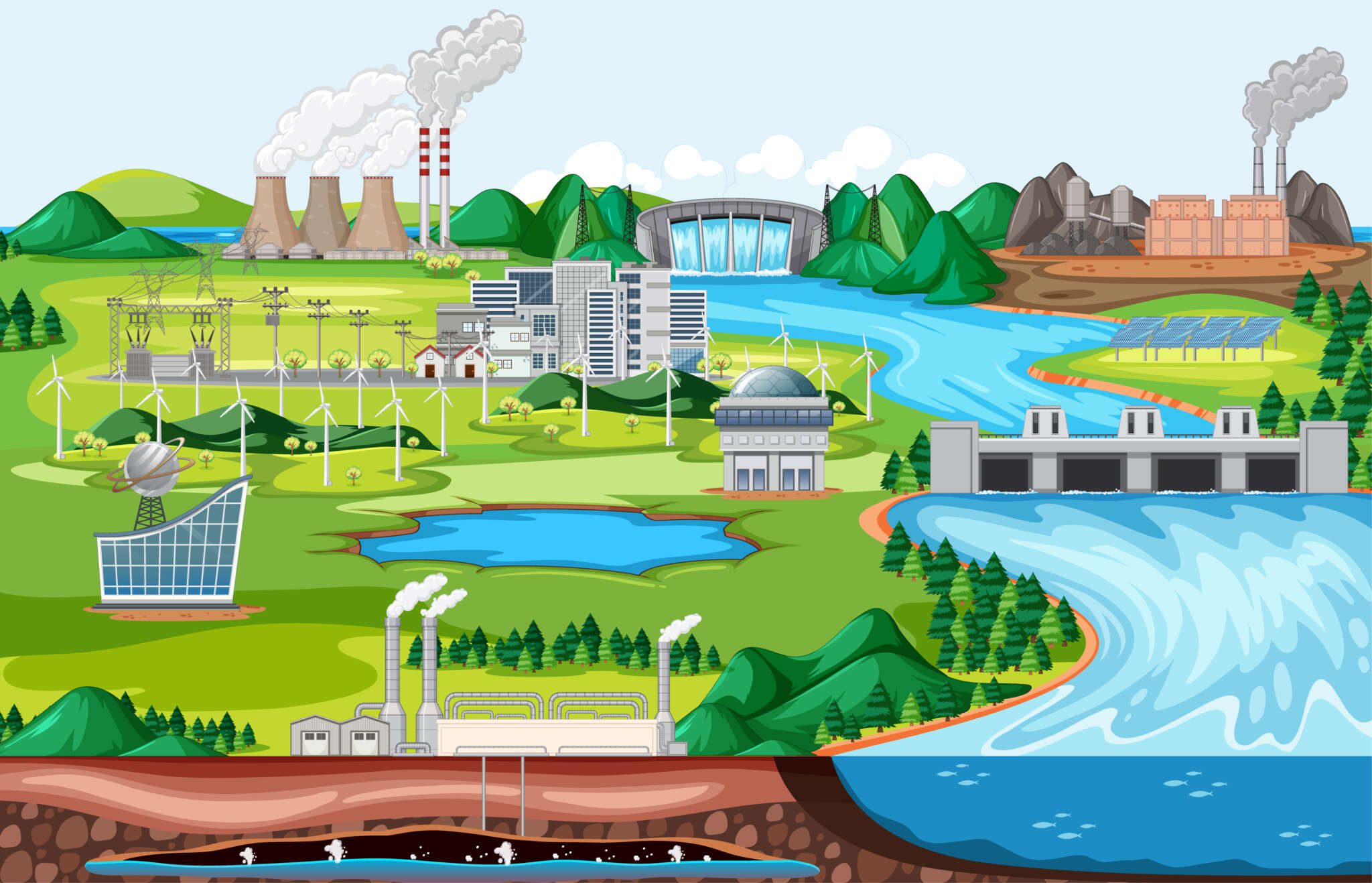Introduction
Indonesia, as an archipelago with diverse topography, has great potential in the utilization of renewable energy. One renewable energy source that has been widely utilized is hydropower. Hydropower plays an important role in supporting Indonesia’s energy transition towards cleaner and more sustainable energy sources.
Get to know hydropower and its working principles

Hydropower is a power plant that utilizes the potential and kinetic energy of water to produce electrical energy. Its working principle involves several stages.
- Water Impoundment: Water from a river or lake is collected in a dam to create a difference in elevation.
- Water Flow: Water is conveyed through a rapid pipe to the turbine.
- Turbine Movement: The powerful flow of water rotates the turbine, converting kinetic energy into mechanical energy.
- Electricity Generation: The mechanical energy from the turbine is used to rotate a generator that produces electricity.
- Electricity Distribution: Electricity generated is channeled through substations to the distribution network for use by consumers.
This process is efficient and produces no greenhouse gas emissions, making hydropower an environmentally friendly energy source.
The Role of Hydropower in Renewable Energy in Indonesia
Hydropower has a significant contribution to Indonesia’s renewable energy mix. According to data from the Ministry of Energy and Mineral Resources, as of 2021, the contribution of hydropower in new renewable energy reached 59% of the total EBT generating capacity in Indonesia.
Some of the major hydropower plants in Indonesia include.
- Cirata Hydroelectric Power Plant: Located in West Java, with a capacity of approximately 1,008 MW.
- Saguling Hydroelectric Power Plant: Also in West Java, with a capacity of about 700 MW.
- Asahan Hydroelectric Power Plant: In North Sumatra, with a capacity of about 180 MW.
This hydropower development supports the government’s target to achieve a renewable energy mix of 23% by 2025.
Career Opportunities in Energy
Graduates of S1 Energy Systems Engineering have broad career opportunities in the energy sector, both in power generation companies, energy consultants, and research institutions. To see the latest job vacancies in the power plant sector, visit here.
Tags : S1 Teknik Sistem Energi | Electrical Energy Engineering
Author: Rasyifa Putri Raidah – Directorate of Information Technology Center
